ANTHROPOMETRY
Projects
Partnering with stakeholders, NIOSH has applied the most current 3-dimensional digital scanning technology and developed improved body-shape quantification methods to advance anthropometry research

Law Enforcement Officer Anthropometry for Safe Vehicle Operation and Personal Protection
The project goals are to 1) establish a national database of law enforcement officer (LEO) body dimensions and shapes, 2) use the data to develop criteria to update standards related to police vehicles and personal protective equipment (PPE), and 3) transfer the data to industry for improvements to PPE and vehicles. The database will consist of 1000 officers across four geographic regions of the United States for a representative sample. The database will include traditional measurements and three dimensional (3D) scans. Data collection is expected to begin in October 2016. Females will be oversampled; this is necessary for statistical reasons. This new data will replace 40-year-old data. Partners will have wide ranging uses for the data from PPE improvements (such as body armor and seat belt design) to vehicle improvements (such as vehicle interior and peripherals design).
Project contact: Hongwei Hsiao, Ph.D.
Protective Technology Branch, Division of Safety Research
(304) 285-5910
Project period: 2015-2019
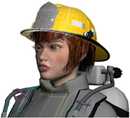
Sizing Firefighters and Fire Apparatus: Safe by Design
This project established a large-scale anthropometric database of U.S. firefighters for the design of ergonomically-efficient automotive fire apparatus. Ergonomically sound fire apparatus helped reduce the exposure of firefighters to fatal and non-fatal injuries. The database consisted of anthropometric data for 900 firefighters and apparatus workspace data for 195 firefighters, who were selected as representative of the U.S. firefighter population in age, gender, and race/ethnicity. The database included traditional anthropometric measurements, digital scans in 5 postures, and fire-truck cab workspace measurements. Results from this study have been applied to the updating of relevant NFPA standards on fire apparatus and the design of fire-engine cabs, seats, restraint systems, and firefighter bunker gear.
Project contact: Hongwei Hsiao, Ph.D.
Protective Technology Branch, Division of Safety Research
(304) 285-5910
Project period: 2008-2012
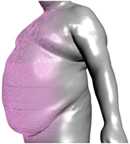
Improved Truck Cab Design through Applied Anthropometry
The purpose of this project was to establish an anthropometric database of U.S. truck drivers for the design of ergonomically-efficient truck cabs to reduce exposure to fatal and non-fatal injury hazards among U.S. truck drivers. The database, which is now current, consists of stratified anthropometric and workspace data of 1,779 male and 171 female truck drivers across the U.S. It also includes digital scans and truck cab workspace measurements for an additional 200 truck drivers. This project engages major U.S. truck manufacturers to develop ergonomically-efficient truck cabs. In addition, results from this study can be used to update relevant Society of Safety Engineers (SAE) standards for truck cab occupant environments.
Project contact: Jinhua Guan, Ph.D.
Protective Technology Branch, Division of Safety Research
(304) 285-6333
Project period: 2006–2011
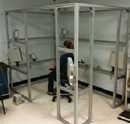
Development of Computer-Aided Face-Fit Evaluation Methods
This project also developed computer-aided face-fit evaluation methods. A nationwide anthropometric survey of the heads and faces of U.S. workers was conducted. Using this data, new respirator fit test panels were developed. Headforms were also developed for testing respirators, safety glasses, and helmets. A new design approach using 3D data was developed and compared to the traditional approach using facial dimensions. Shape statistics were used to capture the variability in the actual shape of the faces. Outcomes included the establishment of new fit test panels for today’s U.S. workers; development of headforms, and incorporation of these panels and headforms into NIOSH and ISO respirator standards.
Project contact: Ziqing Zhuang, Ph.D.
Technology Research Branch, National Personal Protective Technology Laboratory
(412) 386-4055
Project period: 2001–2011
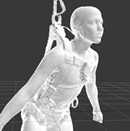
Harness Design and Sizing Effectiveness
This project developed a whole-body fall-arrest-harness sizing scheme and design to control hazards during falls from elevation. Human size data, extracted from an existing database of U.S. workers and four controlled laboratory studies on harness fit to construction workers, were used. Researchers also used three-dimensional anthropometry information to determine the sizing scheme and to develop torso/hip/thigh strap assemblies and rigging components that best enhanced the ability of the worker to select and use the harness. Partnering with harness manufacturers, the harness system has been validated for efficacy and introduced into prototyping for production. The research will help the construction and other industries to reduce the risk of injury that results from poor user fit, improper selection, and the failure to don the protective equipment properly.
Project contact: Hongwei Hsiao, Ph.D.
Protective Technology Branch, Division of Safety Research
(304) 285-5910
Project period: 2002-2006
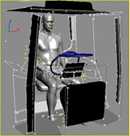
Anthropometry Criteria for the Design of Tractor Cabs and Protection Frames
This project investigated agriculture worker-tractor interfaces for safe tractor operation, using three-dimensional human- and tractor-scan information. Specifically, the project developed (1) approaches to quantify 3-D human shapes and sizing information for assessing machine and equipment accommodation level, (2) representative human body models for machine design applications, and (3) anthropometric criteria for the design of farming tractors and rollover protective structures (ROPS) to increase the safety of farming-tractor operation. The research results were shared with the SAE J2194 standard committee for possible revisions to the tractor-cab-dimension standard, which will have a potential impact on the design of next-generation tractor cabs for better protection of tractor/farming machine operators.
Project contact: Hongwei Hsiao, Ph.D.
Protective Technology Branch, Division of Safety Research
(304) 285-5910
Project period: 2000-2003
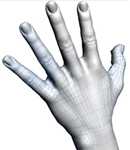
Hand Anthropometry of Meat Processing Workers This project studied hand anthropometry of workers for designing better fitting protective gloves. It collected and analyzed hand anthropometry of male and female meat processing workers measured at a pork processing plant in the United States, with an emphasis on the Hispanic subsample in the study population.
Project contact: Hongwei Hsiao, Ph.D.
Protective Technology Branch, Division of Safety Research
(304) 285-5910
Project period: 2001-2006
- Page last reviewed: April 12, 2017
- Page last updated: May 6, 2016
- Content source:
- National Institute for Occupational Safety and Health Division of Safety Research


 ShareCompartir
ShareCompartir